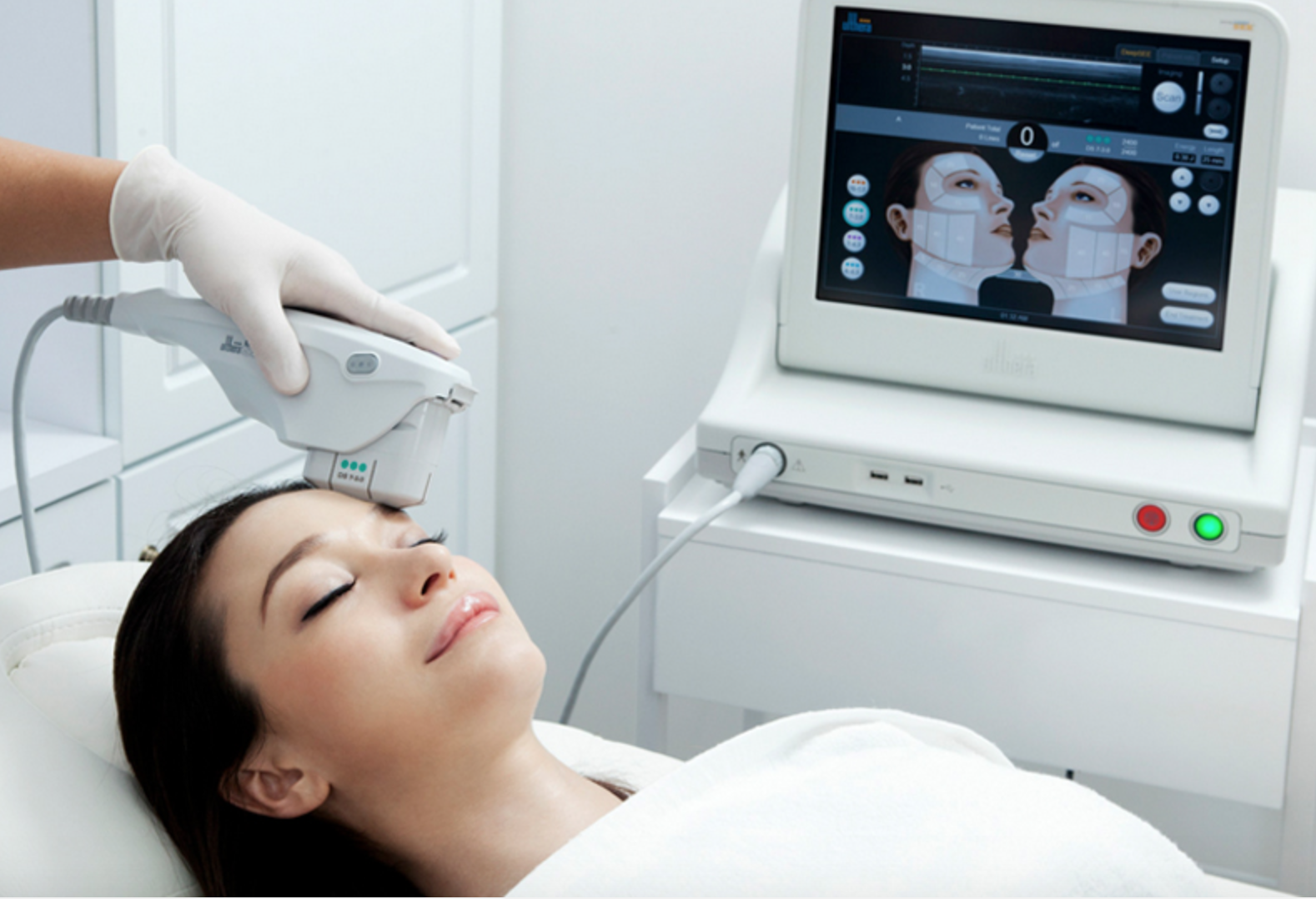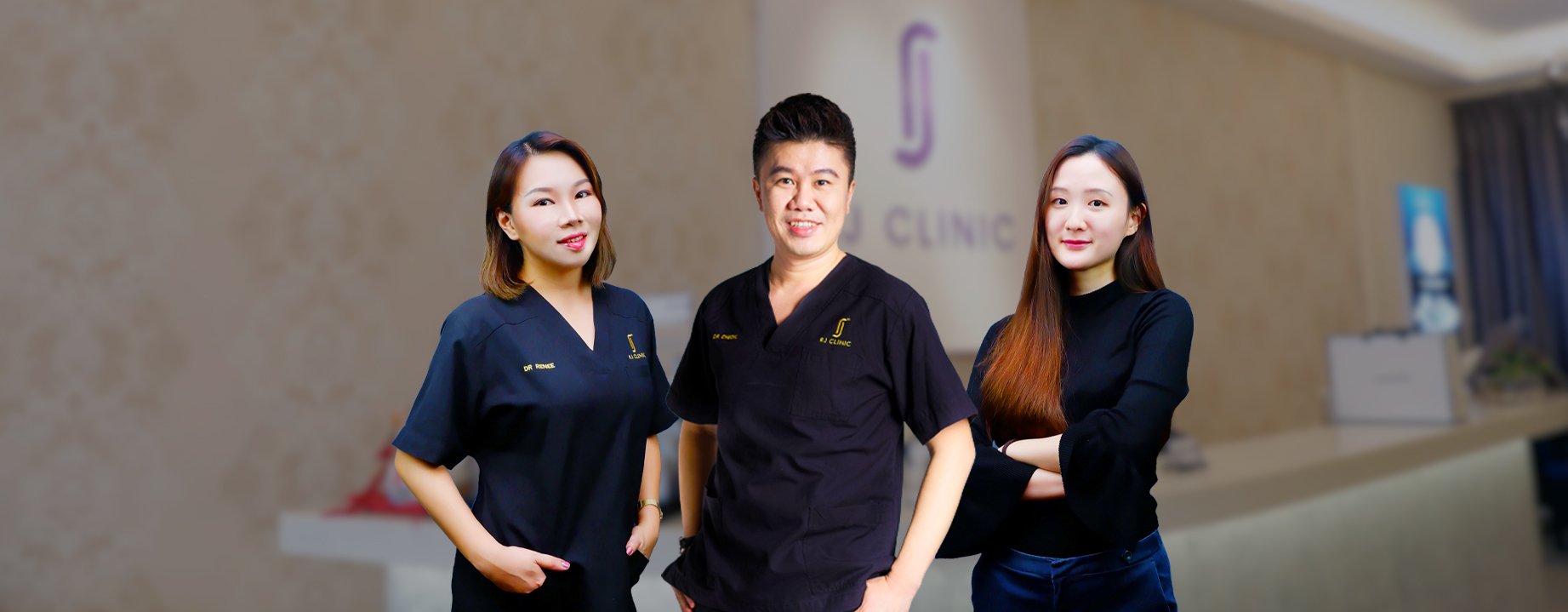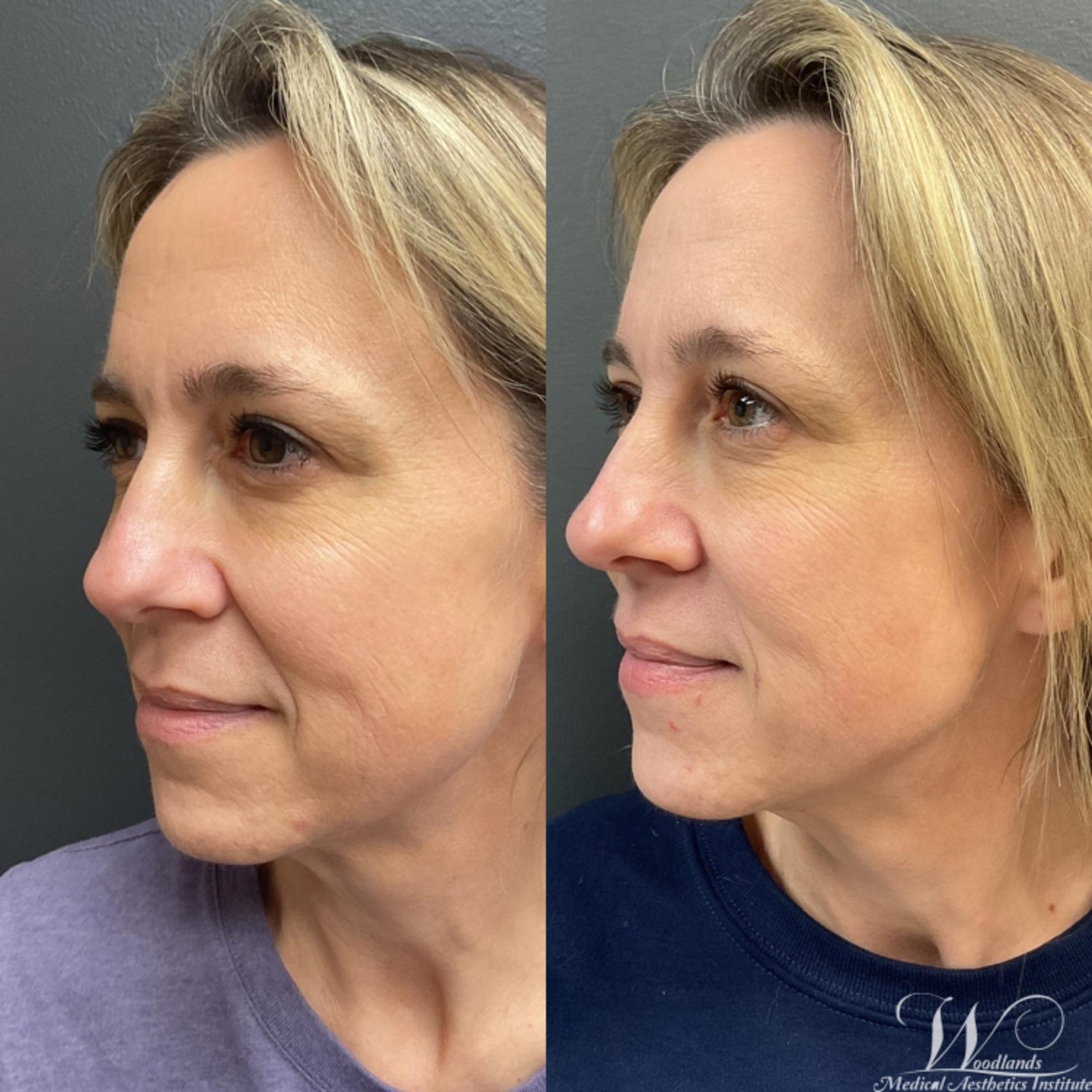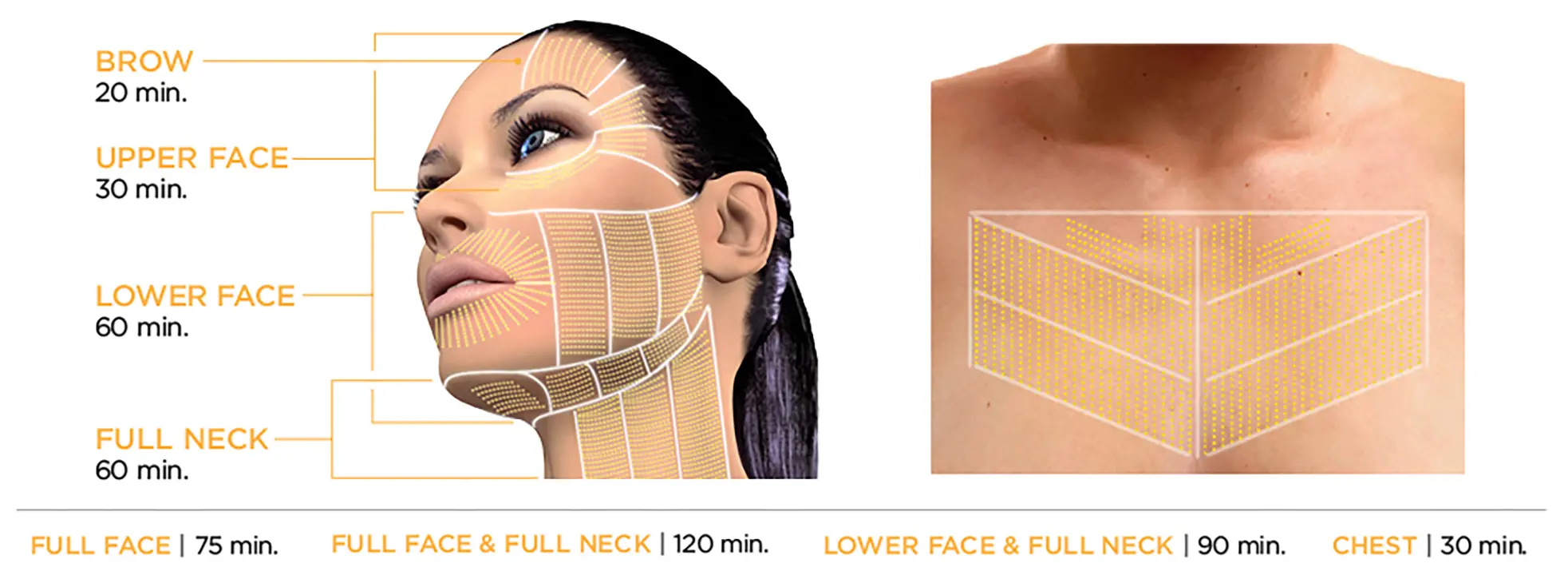Why Ultherapy May Be Clinically Needed: Checking Out the Factors for a Non Surgical Lift
Ultherapy is gaining focus as a practical alternative for people encountering skin laxity as a result of maturing or certain clinical conditions. This non-surgical therapy stimulates collagen manufacturing, supplying a solution that avoids the healing time connected with invasive procedures. As people seek to boost not just their look yet also their total skin health, understanding the conditions that warrant Ultherapy's usage ends up being crucial. What factors add to its medical requirement?
Comprehending Ultherapy: What It Is and How It Functions
Ultherapy, a non-invasive cosmetic procedure, makes use of ultrasound modern technology to stimulate collagen production and promote skin firm. By supplying focused ultrasound power deep right into the skin, it targets the fundamental layers typically dealt with in medical facelifts. This procedure encourages the body's all-natural healing feedback, leading to steady training and tightening of the skin with time.

Therapy sessions typically last between 30 to 90 mins, depending on the dimension of the location being dealt with. While outcomes may not be promptly visible, perfect effects typically appear within two to three months as collagen remains to establish. Ultherapy offers an engaging non-surgical option for individuals seeking skin renewal without the requirement for invasive treatments.
The Aging Refine: Effects on Skin Elasticity and Collagen
Aging certainly brings modifications that diminish skin elasticity and collagen production, resulting in noticeable signs of sagging and creases. As individuals age, the skin's capacity to preserve wetness reductions, resulting in a drier and much less resistant surface area. Collagen, an essential protein responsible for skin structure, additionally decreases, causing the skin to lose its firmness and younger look. Aspects such as sunlight direct exposure, toxic wastes, and way of living choices better accelerate this decrease in skin quality.
This loss of flexibility and collagen creates a cascade of changes, consisting of the formation of dewlaps, growing nasolabial folds, and a total drooping look. The skin's support system deteriorates, making it more at risk to the effects of gravity. Subsequently, lots of people seek treatments like Ultherapy to battle these aging impacts, intending to bring back a much more younger, tight appearance without the demand for intrusive surgical procedures.
Medical Conditions That May Advantage From Ultherapy
Ultherapy is significantly acknowledged for its potential advantages in dealing with numerous clinical problems. Individuals experiencing skin laxity, those in post-surgical healing, and clients with chronic skin problem might find this non-invasive treatment useful. By stimulating collagen manufacturing, Ultherapy can enhance skin suppleness and enhance overall appearance for these teams.
Skin Laxity Issues
Skin laxity can be a substantial worry for individuals experiencing different medical conditions that affect the stability and elasticity of their skin. Conditions such as Ehlers-Danlos disorder, which interferes with collagen manufacturing, can cause early skin aging and drooping. Additionally, individuals with autoimmune conditions might experience skin modifications that add to laxity. Hormonal changes, especially during menopause, additionally play a function in diminishing skin suppleness. Ultherapy, utilizing ultrasound technology, targets the much deeper layers of skin, boosting collagen manufacturing and tightening the affected locations. This non-invasive therapy may offer a viable option for those looking for to resolve skin laxity arising from these medical problems, boosting both look and self-confidence without the requirement for medical intervention.
Post-Surgical Recovery Aid
Post-surgical recuperation can usually present obstacles, particularly for individuals experiencing skin laxity as a result of surgical treatments. Ultherapy functions as a potential aid in this circumstance, using ultrasound technology to boost collagen manufacturing and improve skin rigidity without intrusive procedures. People that have actually undergone surgical treatments such as facelifts, liposuction surgery, or other body contouring treatments may locate that Ultherapy boosts their healing by attending to irregular appearance and laxity that can occur post-operation. This non-surgical technique can lead to boosted aesthetic outcomes, potentially decreasing the requirement for extra medical treatments. It might help ease discomfort associated with the healing process, offering individuals an extra comprehensive recuperation experience. Ultherapy can be an important alternative in post-surgical treatment.
Chronic Skin Conditions
For individuals experiencing chronic skin conditions such as acne scars, rosacea, or laxity due to aging, non-invasive treatments may use substantial relief and improvement. Ultherapy has actually arised as an encouraging option, using ultrasound innovation to boost collagen manufacturing deep within the skin. This process can enhance skin structure and elasticity, attending to problems like uneven skin tone and sagging. In specific, those with rosacea may experience reduced soreness and swelling, while patients with acne marks can gain from improved skin smoothness and overall appearance. Importantly, Ultherapy provides a non-surgical choice that minimizes recuperation time and risks linked with invasive procedures, making it an enticing choice for people looking for effective monitoring of persistent skin problem.
Emotional Impact of Sagging Skin and Aesthetic Problems
The emotional toll of aging typically shows up in the type of sagging skin, which can significantly affect an individual's self-esteem and general psychological health. Lots of people associate youthful looks with energy and attractiveness, bring about sensations of insufficiency when encountered with visible indicators of aging. This regarded decline in elegance can lead to social anxiousness, withdrawal from social communications, and a raised fixation with one's appearance.
Individuals might really feel obliged to seek visual therapies to combat these concerns, as the need to keep a younger appearance can end up being linked with individuality. The mental effects of drooping skin may additionally cause anxiety or a diminished high quality of life. Consequently, non-surgical options like Ultherapy become possible options, intending not only to rejuvenate the skin but also to recover confidence and a positive self-image, inevitably resolving the deeper emotional ramifications of aging.
Comparing Ultherapy to Typical Surgical Options
When contrasting Ultherapy to typical medical choices, considerable differences emerge in both cost-effectiveness and recovery time. Ultherapy deals a non-invasive approach that commonly leads to lower costs and very little downtime for people. On the other hand, medical lifts generally require even more monetary investment and an extended recovery period.
Cost-Effectiveness of Ultherapy

Although conventional surgical lifts typically feature considerable ahead of time expenses and prolonged recuperation times, Ultherapy browse around this web-site offers a compelling choice that can deliver comparable results at a portion of the cost. The typical price of a medical facelift can vary from $7,000 to $15,000, while Ultherapy treatments normally drop in between $2,000 and $4,500, depending on the location dealt with and service provider knowledge. Furthermore, the lack of comprehensive pre-operative analyses and post-operative treatment related to Ultherapy even more contributes to its cost-effectiveness. This technique not just minimizes monetary pressure however likewise permits people to buy other aspects of their health and wellness. In this way, Ultherapy becomes an economically viable option for those seeking facial restoration without the burdens of standard surgery.
Healing Time Comparison
Recovery time is a visit our website significant consider the decision-making procedure for those taking into consideration cosmetic treatments. Ultherapy attracts attention as a non-surgical choice that usually needs marginal downtime. The majority of patients can go back to their day-to-day tasks almost promptly, experiencing just light redness or swelling that typically deals with within a couple of hours. On the other hand, typical medical alternatives, such as renovations, typically necessitate a lengthy recuperation duration. People may encounter numerous weeks of swelling, bruising, and limited activity, with some returning to normal routines taking up to 3 months. This plain distinction in healing time makes Ultherapy an attractive option for individuals looking for reliable results without the substantial aftercare related to surgery, enabling a smoother adjustment back to everyday life.
The Long-Term Perks of Non-Invasive Treatments for Skin Health
As people increasingly look for options to surgeries, the long-term advantages of non-invasive therapies for skin health and wellness come to be extra noticeable. Therapies such as Ultherapy, chemical peels, and laser treatment deal considerable advantages without the demand for considerable recovery times connected with surgical treatment. RJ Clinic Ultherapy. In time, these non-invasive options can promote collagen manufacturing, leading to firmer skin and an extra younger appearance
Additionally, routine non-invasive treatments can enhance skin structure, tone, and elasticity, improving general skin health. Individuals typically experience fewer problems and negative effects, making these procedures extra appealing.
The collective effects of constant therapies can sustain and lengthen aesthetic improvements, permitting individuals to preserve their desired look with marginal downtime. By prioritizing non-invasive approaches, people can achieve lasting outcomes while prioritizing their health and wellness and wellness. Inevitably, the lasting advantages of such methods underscore their expanding appeal his comment is here in contemporary skin care.
Frequently Asked Concerns

For how long Does an Ultherapy Session Generally Take?
An Ultherapy session generally lasts in between 30 to 90 mins, depending on the therapy location. Aspects such as the person's particular requirements and the level of the treatment can affect the general duration.

Exist Any Adverse Effects Related To Ultherapy?
Ultherapy can cause adverse effects such as short-lived inflammation, swelling, or tenderness in the treated location - Skin tightening treatment KL. While many people experience marginal discomfort, it is crucial to speak with an expert for tailored recommendations and prospective responses
Just How Soon Can I See Outcomes After Treatment?
Results from Ultherapy typically begin to appear within a couple of months post-treatment. The full effects may remain to develop over six months as collagen manufacturing increases, leading to obvious lifting and firm of the skin.
Is Ultherapy Suitable for All Skin Types?
Ultherapy is normally appropriate for various skin kinds, including lighter and darker tones. Nevertheless, private skin problem and worries may influence its performance, making appointments with a qualified professional essential for customized referrals.
Just How Typically Should Ultherapy Treatments Be Repeated?
Ultherapy therapies are generally advised every 6 to 12 months, relying on private skin problem and wanted outcomes. Routine assessments by a qualified practitioner can assist establish the ideal frequency for upkeep and effectiveness.